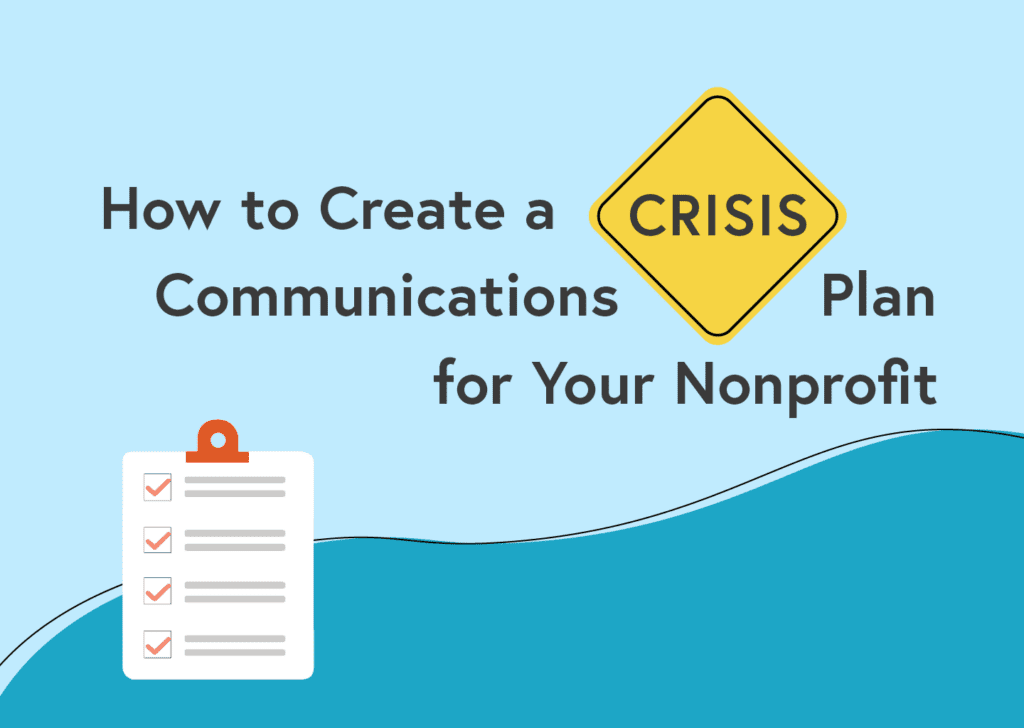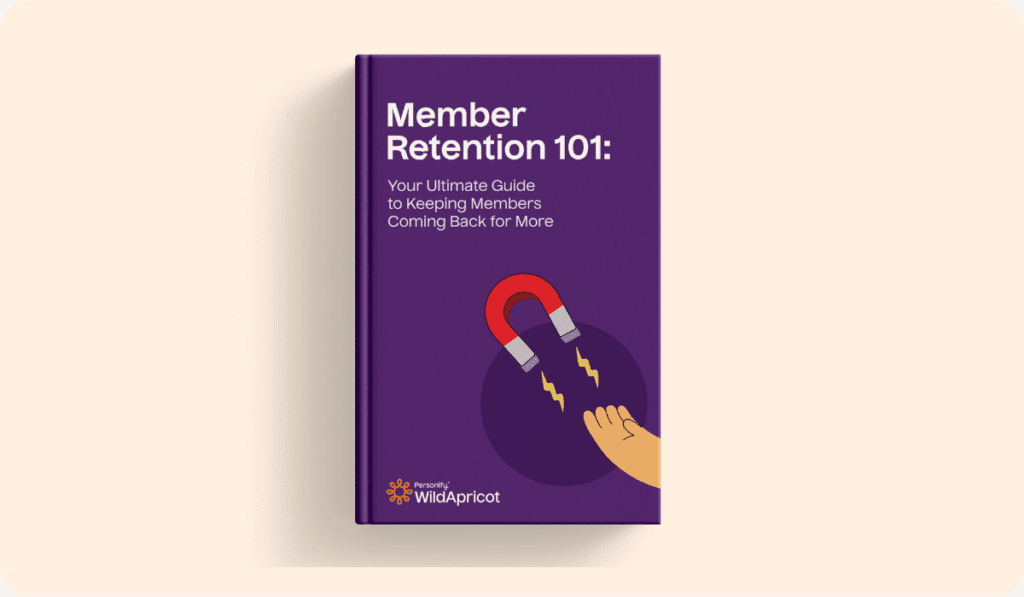In times of crisis, it’s hard to know how to respond.
Your initial tendency might be to go into fight or flight mode: either to respond right away, without taking the time to think of a balanced response, or to run away from the situation.
However, as difficult as it is, the best response lies somewhere in between: in remaining honest without being defensive, and in taking a step back to better analyze the situation without ignoring it altogether.
But how do you figure out how to strike this balance?
That’s where a crisis communications plan comes in.
What Is a Crisis Communications Plan?
A crisis communications plan is a series of steps that your nonprofit can follow in case of an emergency or other unexpected event. It details the messaging you’ll be using, how you’ll be communicating and responding to the public, and, when applicable, the steps you’ll take to ensure said crisis doesn’t happen again.
Looking for an example or a template to follow? Check out this example from the Colorado Nonprofit Association.
Whether your organization is facing an internal challenge (such as a board member who’s been accused of sexual harassment) or one that’s precipitated by outside challenges (such as a natural disaster) one of the most important things you can do is have a plan in place.
In this post, I’ll be going through the most important steps you need to follow when creating a crisis communications plan for your nonprofit.
I’ve also asked Holly Bodner, public relations professional who has worked on cause-related awareness campaigns for the US Departments of Education and Labor, Johns Hopkins University and NIH, and founder of Two Reasons Media, for advice on how nonprofit communications professionals should best handle the situation.
1. If You’re in the Middle of a Crisis, Start Here
Although it’s always best to prepare a plan like this in advance, obviously that won’t always be the case: even the best-laid plans won’t always apply for every situation (and I’m pretty sure no one realised we would currently be facing a pandemic).
So, if you’re currently deep in the trenches of a public relations battle and aren’t sure where to start, take a deep breath.
It’s okay if you’re not an expert, or if you’ve never done something like this before.
You and your organization will get through this.
Once you’ve told yourself that a few times (or until you start to believe it), you can move on to dealing with it again. It’s natural to be in panic mode to start with, but if you can remind yourself that you’re doing your best and are handling it as well as you can, everything will work out in the end.
2. Know Who Has to Respond to What
One of the first steps in creating a plan is to know who exactly needs to be involved, should a crisis arise. Depending on how large your organization is, this team might just be your ED, board members and your head of marketing, but might also include your HR team, other people on the marketing team, or people on the team affected by the current crisis.
“The roles and responsibilities of the crisis communications team are the number one thing that has to be included in your plan,” said Holly. “By that I mean who’s on the team, who’s in charge (preferably someone with access to the executive director or other key decision maker) and the platforms or technology that will be used to disseminate information.”
Someone on this team should also be designated as your organization’s main spokesperson. Again, it depends on the situation, but it’s most likely to be your executive director or head of communications. This person will be responsible for spreading the message you’re trying to convey to the press, and should be prepared to reply to all of their questions in a calm and professional way.
Of course, depending on how much buzz is happening around the situation, there may be other people who will need to respond. For example, you might also delegate a few staff members to respond to all questions on social media for the next little while if you’re seeing a lot of demand, but make sure everyone has been clearly briefed on what they have to say — there’s nothing worse than having members of your team accidentally giving false information simply because they didn’t know any better.
To that end, make sure you have a way to reach relevant team members after hours so that the right message can be decided upon ASAP. You may not be the spokesperson or decision-maker for your organization, but you’ll want to make sure you can get a hold of whoever is quickly. Keep home phone or cellphone numbers close at hand so that even if the news breaks at 6 AM, your organization will have the chance to respond. (After making sure that everyone is safe, of course.)
3. Assess the Situation
As prepared as your organization may be, there are always elements of your crisis strategy that you’ll need to tailor to the individual situation.
Here are a few questions you can use when preparing your response:
- Is anyone in immediate danger?
- Have we taken all the actions we can to mitigate the crisis so far? If not, what needs to be done first?
- Has our staff been informed? Do they know who to refer questions to?
- Are there any other stakeholders (such as board members and partner organizations) who need to be informed?
- Is there more information we need to learn before going public?
- What questions are we likely to be asked?
4. Decide Which Channels You’ll Be Using
Is a press release necessary? Will you appear on local TV? Or do you just need to send out a Facebook post and an email to your most fervent supporters?
Depending on the situation, various levels of responses will be needed. Your plan should encompass who is responsible for handling each one, and figuring out the messaging as quickly as possible — especially given how quickly news spreads on social media these days.
“If you’ve built up a social media presence, that should be one of the places where you are communicating,” said Holly.
“Once upon a time, the majority of crisis communications was conducted through media channels, but social media upended all that, essentially removing the intermediary and letting brands speak directly to customers. While you’re prepping your CEO to speak to reporters, the conversation is already taking place online, often in real-time. That’s why it’s important to include someone from social media on the crisis communications team.”
Here are a few general guidelines for communicating through various platforms:
- Social media: During many crises, particularly something like COVID-19 where we’re all forced to stay inside, chances are that most people are glued to their phones. Using social media, you can quickly update them as new information becomes available. However, due to its temporary nature, not everyone will see all your posts, so make sure key information is communicated elsewhere as well. It’s also best to suspend planned posts on social media that aren’t relevant to the immediate situation. Remaining on autopilot can seem insensitive at best, and at worst can open you up to accusations that you’re not taking the current crisis seriously. Instead, “Craft your outreach for down the line (that may be a few days, a week or even later — you’ll need to assess for your community and your organization) so you’ll organize most powerfully, galvanizing disheartened supporters to join you in action for a better future,” says Nancy Schwartz in this post about nonprofit marketing during a tragedy.
- Email: Sending updates via email is one of the most common ways to ensure your audience is kept up to date on everything you’re doing. For example, this email from Best Friends Animal Society shares how they’re handling the COVID-19 pandemic, and how their supporters can do the same in their homes.

- Website: Make sure your website is easy to edit so that you can quickly do so as new information becomes available. It can also be helpful to have a press or brand kit readily available so that members of the press who are checking it out will have the correct information about your nonprofit.
The people handling each channel might also vary. Depending on how large your team is, you might be working with the marketing team as well as your customer support team to cover every possible avenue for communication.
Finally, you’ll need to determine how frequently you’re communicating on each channel. For example, you might be sending out Tweets every thirty minutes, and only updating your supporters via email every few days.
5. Five Best Practices to Remember While Communicating in a Crisis
When you’re in the midst of a crisis, no matter the situation, there are a few general communications principles that can serve you well.
- Respond quickly. This doesn’t mean saying the first thing that would come out of your mouth, but it does mean getting what your organization is doing to remedy the situation out as quickly as possible. However, remember that accuracy still trumps speed. “It’s important to respond quickly, but it’s equally important to respond with accurate information. It’s OK to say you don’t have an answer to something. It’s better to say that and follow up later than to spread misinformation,” said Holly.
- Remain honest. Share as much of the story, and your response to it, with your supporters as you can. Being as transparent as you can will help show your sincerity and your commitment to fixing the situation. It will also help reduce fallout in the future, because the truth has a way of coming out whether you like it or not.
- Correct misinformation, but don’t delete comments. Unless they’re openly hateful, deleting comments can only add fuel to the fire. Your followers will wonder what else you’re covering up.
- Don’t disappear on any platform. People will start to get more stressed and worried if they can see that there are unanswered questions on your Facebook wall. Even if your only update is that you have no new information at this time, it’s better to share it than to say nothing at all.
- Show compassion. Your organization isn’t the only one affected. If you’re not at the front lines of the immediate crisis, it’s a good time to show solidarity with other organizations who are, by sharing their content on social media and encouraging your supporters to support them as well. A great example is this post from the Community Foundation of Sarasota County that provided helpful resources following the Boston Marathon tragedy.
- If you’re leading the charge, or your organization is facing accusations, then focus on putting yourselves in your supporters’ place: what do they need to hear and see from you right now to be reassured and recover?
6. Keep an Eye on It
When preparing your plan, keep in mind that some situations may take longer to resolve than others.
Until everything is cleared up, you’ll want to designate a team member to monitor the situation on social media as well as other press, if applicable. That way, you can see live updates of how the public and local government is responding and know if you need to share more information or take more action.
There are also a few questions you’ll want to be able to answer as the situation evolves:
- How many people are talking about it?
- Is it in the media?
- If the answer is yes, what are they saying about you or the situation?
- What new information has come to light about the situation?
- If I was part of my intended audience right now, what would I need to hear?
Based on all of these things, your response may need to change as time goes on. Outlining potential ways the situation might go when it first starts can help you prepare for the worst (or for the best!) without getting trapped in a spiral of despair.
7. Stay in Touch
After the crisis you’re facing has passed, or even during various steps of the crisis, it’s important to have regular check-ins amongst the team responsible for handling it.
That way, you can constantly iterate on your response and ensure it’s as good as it can be for future crises (since as much as we hope an emergency won’t happen again… it probably will).
Once you can identify that it’s finally over, you should conduct a more formal retrospective in order to see what your team did wrong, what it did right, and what your plan is missing in order to handle it better next time.
8. Take the Next Step
This post is really just the beginning. There’s a lot more that can be said on managing and communicating during a crisis.
So, if you’re in the middle of an emergency right now, this might be all you have time for. However, when the current crisis is over, it might be a good idea for you or whoever is responsible for crisis communications on your team to take some further training on how to best handle other situations that come up.
Within your team, it could also be helpful to review other situations that might arise and run practice crisis simulations to see how they can be handled. That way, you’ll feel a little more prepared no matter what comes up.
And one final reminder: at the end of the day, we’re all human.
We all get scared.
The most important thing you can do is reassure people that no matter how crazy everything gets, or how badly the situation has gone so far, your organization is doing its best — that’s all anyone can ask for.
Do you have any other advice on how to respond to a crisis, or how to prepare a crisis communications plan?









